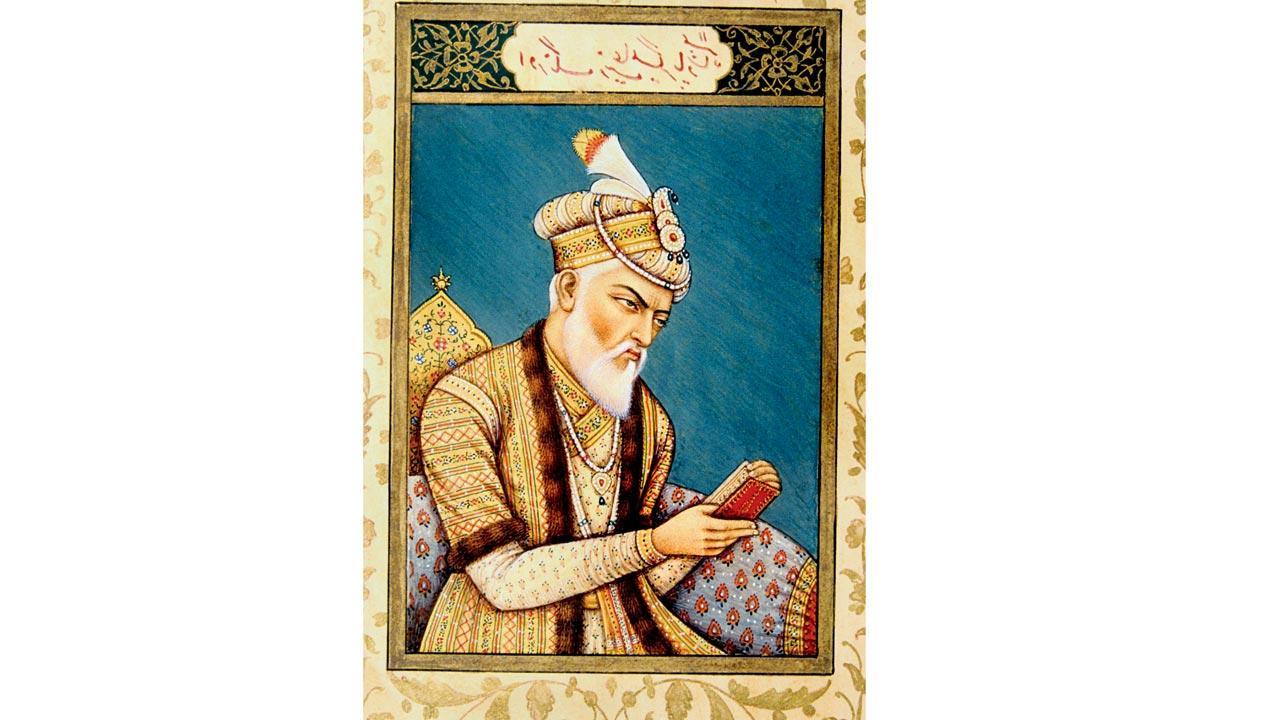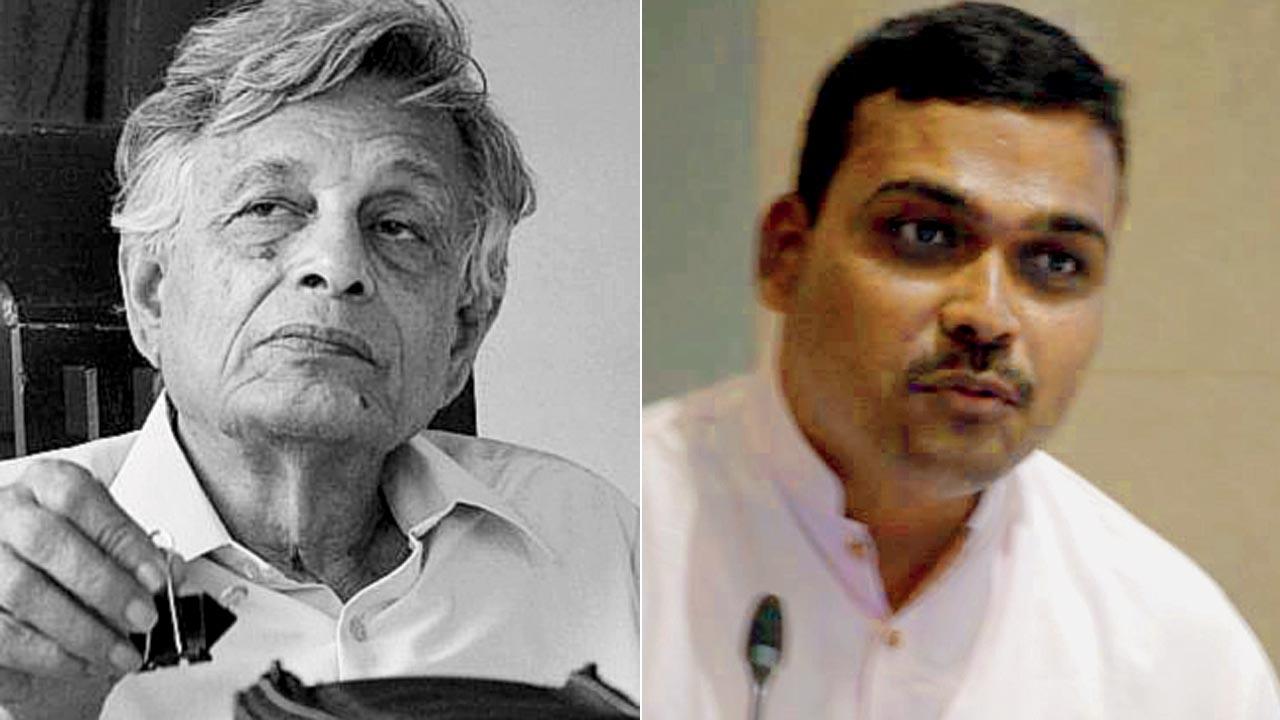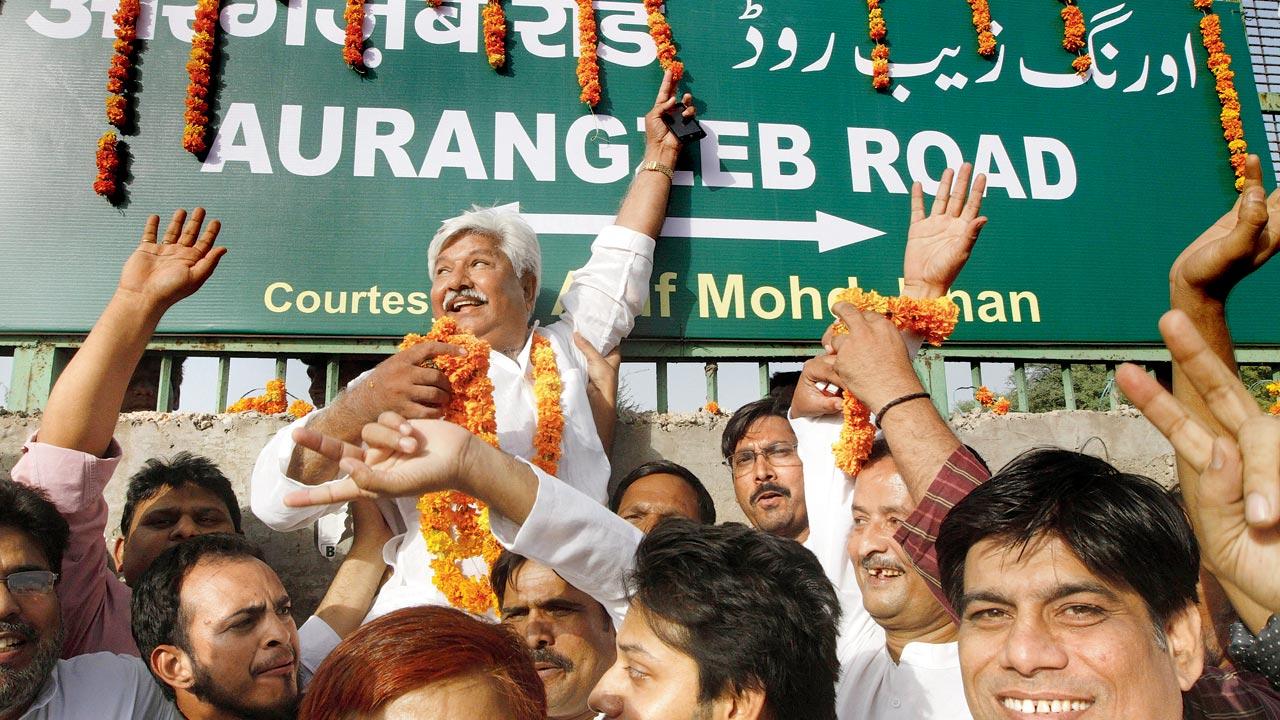The simmering tension in Maharashtra over the 17th century Mughal emperor had us ask historians how Alamgir became Hindutva’s punching bag, and we were met with conflicting opinions. Everyone has a different story

Aurangzeb, the sixth Mughal Emperor, whose reign lasted from 1658 until his death in 1707. Having ruled most of the Indian subcontinent for nearly half a century, he was the second longest reigning Mughal emperor after Akbar. Pic/Getty Images
It's been a restless last few weeks in Maharashtra. Beed’s Ashti town and Kolhapur witnessed episodes of violence over social media posts that valourised 17th century Mughal emperor Aurangzeb or Alamgir, a title that translated to conqueror of the world. In Navi Mumbai, a 29-year-old man was booked for allegedly sharing Aurangzeb’s photo as his status on WhatsApp. A 14-year-old from Beed district was charged under Sections 295-A (for deliberate acts that insult the religion or religious beliefs of any class of people) and 153-A (for promoting enmity between different groups of people and doing acts prejudicial to maintenance of harmony), for allegedly suggesting a celebration around the Mughal ruler’s coronation anniversary. Deputy CM Devendra Fadnavis drew sharp criticism when he warned “Aurangzeb ki auladein” of strict action.
ADVERTISEMENT
“The atmosphere is not tense,” a senior Maharashtra police official tells mid-day, “but yes, below the surface, things are simmering, and we are doubly alert.” The officer, who wished to remain anonymous, says that arrests made in cases such as these, often fall in the grey area. “And that’s because, when you book someone for hurting religious sentiments, this in itself is subjective. There will be a certain group that will find the police’s actions excessive, and another that will say it is necessary to maintain law and order.” But social media posts and statuses, he says, have caused riot-like situations in the past, and the current set of measures are only being taken to avoid an untoward incident in the future. “Several organisations have been using this [the Aurangzeb issue] to their benefit. Half of our time, at present, goes in cyber patrolling. We also have our ears to the ground, and are identifying any menace-maker. This issue has kept us on our toes.”

Hindol Sengputa, Manu S Pillai, Audrey Truschke, William Dalrymple and Syed Ali Nadeem Rezavi
Historian and author Manu S Pillai, who in 2018 authored Rebel Sultans: The Deccan from Khilji to Shivaji, tells us that historically, Aurangzeb was not a popular figure in the region (present-day Maharashtra). “The Mughals were [the] invaders, and even before Shivaji, the sultanates that ruled the Deccan resisted Mughal encroachment.” According to Pillai, for a quarter of a century, Malik Ambar (1548-1626) kept the Mughals at bay on behalf of the sultanates. Even Shivaji paid rich tributes to him in his court epic, the Sivabharata, he says. During the nearly century-long conflict, the northern empire “caused famine, political instability and much suffering in the area”.
But Aurangzeb’s violence is most recalled for his execution of Chhatrapati Shivaji’s son and heir, Sambhaji. “While Aurangzeb—as an emperor—would have viewed his action as one of punishing a rebel chieftain, in local memory he is the outsider who tortured and murdered a legitimate king,” says Pillai, “That Aurangzeb ruled over an empire increasingly beset with problems, rebellions, and therefore unleashed violence to try and retain control, means that his career offers plenty more negative features. If Akbar, thus—who was also capable of great violence, as it happens—is cast as the ‘good’ Mughal emperor, Aurangzeb has been cemented in popular imagination as the other extreme: the ‘bad’ emperor.” There are, however, nuances to be argued, feels Pillai. “But in political imagination nuance ultimately cedes space to emotionally evocative images of the past.”
 Irfan Habib, historian-professor and Kedar Phalke, historian
Irfan Habib, historian-professor and Kedar Phalke, historian
At the centre of the present debate is also Aurangzeb’s anti-Hindu legacy. Dr Hindol Sengputa, historian and author of Being Hindu: Understanding a Peaceful Path in a Violent World, says “there is absolutely no doubt that the fundamental trait of the Mughal empire was based on Islamic iconoclasm; voluminous Persian sources tell us what they did and why”. “Aurangzeb was the worst example of the lot. He was the most barbaric, bigoted, violent and convinced that India had to be made into a pure Islamic homeland. His violence was deep and ideological,” he says, adding, “He is rightfully vilified.”
Pune-based historian Dr Kedar Phalke dips into late Sir Jadunath Sarkar’s five-volume tome on Aurangzeb to make his case. “In his first volume, he [Sarkar] presented Aurangzeb as a great general and keen administrator, but by his fifth volume, he labelled him a bigot figure with no foresight or vision. He was rude to the Hindus and was a fanatic,” says Phalke. According to him, Aurangzeb took two critical decisions, at important stages of his reign. “On April 9, 1669, he issued a general order to demolish all temples in the Mughal empire. Accordingly, the grand temple of Vishwanath was demolished in Varanasi in August 1669. Maasir-i-Alamgiri by Saqi Mustaid Khan has provided an account of more than 500 temples destroyed during his rule.” The second problematic decision he took, says Phalke, was on April 2, 1679. “He re-imposed tax of jizya on all non-Muslims... this was another taint on his career.” Jizya was a tax levied on non-Muslim subjects, as the price for protection of their lives and property afforded by the Islamic state. Akbar had previously abolished the collection of this tax in 1580.
 Ex-Congress MLA Asif Mohammad Khan with supporters after renaming of a stretch at Delhi’s Jamia Nagar as Aurangzeb Road by himself in protest over its renaming as APJ Abdul Kalam Road on September 4, 2015. Pic/Getty Images
Ex-Congress MLA Asif Mohammad Khan with supporters after renaming of a stretch at Delhi’s Jamia Nagar as Aurangzeb Road by himself in protest over its renaming as APJ Abdul Kalam Road on September 4, 2015. Pic/Getty Images
Aurangzeb’s obsession with the Deccan took him down, thinks Phalke. “He murdered Chhatrapati Sambhaji... but the Marathas didn’t lose their morale. They stood firmly against him, and continued to resist him tirelessly for almost 25 years.” Aurangzeb died at Bhingar in February 20, 1707. His tomb is in Khuldabad.
Veteran historian and Prof Irfan Habib says that there “were instances where Aurangzeb ordered the destruction of temples”. “But, there were also instances where the Mughal government gave grants to temples.” Jizya, he says, was an oppressive policy. “But while examining documentation from Braj bhoomi [part of Aurangzeb’s empire], I learnt that exceptions had been made.” What he finds interesting is that European travellers, who visited during Aurangzeb’s time, found the Indian region as being a peculiar one, where everyone was free to practice their religion. “Perhaps, Aurangzeb’s acts of intolerance were not clearly visible to them.”
One has to look at the past keeping in mind the ethos, sensitivities and milieu of the period, feels Syed Ali Nadeem Rezavi, professor of history at Aligarh Muslim University, and secretary of the Indian History Congress. The debate around Aurangzeb’s life and times are no different. He ruled at a time when concepts like secularism and the idea of nation didn’t exist. “In Pakistan, Aurangzeb is hailed as a hero, as against ‘villain’ Akbar. So much so that Akbar is never taught there.” In India, Rezavi says, it’s the reverse. “During the freedom movement, we needed [to look up to] secular figures... Akbar, was believed to have been the one who took the Rajputs along, and was recalled by most modern Indian leaders.” Rezavi harks back to professor Habib’s work, saying, “the Mughal empire was regressive, and it didn’t concern itself with the masses”. “Kingship here didn’t know any kinship or religion. You could be a son, but you could be a threat.” Aurangzeb captured and executed two of his three brothers, and imprisoned his father, Shah Jahan, to secure the throne.
“Everything was political,” he says. “Even religion. And Aurangzeb was a politician.” According to him, it was his cunning that enabled him to use religion as a tool, to further his empire. “And that’s his biggest flaw.” He cites a vignette from Aurangzeb’s life. “A severe storm hit, when Aurangzeb was in Lahore. From his sources, he overheard that a wall had collapsed and several Muslim saints had been buried under it. The next day, he ordered a procession of his to pass through that street. When Aurangzeb reached the spot where the wall had collapsed, he stopped his elephant, and claimed that God had told him that below this, were the bodies of Holy men. The digging took place, and people retrieved the bodies of the saints. Everyone started hailing him as a ‘living saint’ or zinda pir,” says Rezavi, “This is how he cultivated his image.”
Rezavi references the work of American scholar Richard M Eaton on temple destruction, where the latter argues that the demolition of religious places was an established tradition the world over, during medieval times, not just during the Mughal reign. “Secondly, there was also a tradition, where if there was a revolt or a rebellion, the temples belonging to the rebels would be broken down.” A case in point, he says, is the Vishwanath temple. “Shivaji’s escape [from Agra in 1666] was said to have been initially facilitated by Ram Singh, the son of Jai Singh, whose family built the temple.”
However, Kedar Phalke and Aditya V Kuvalekar, who teaches Economics at the University of Essex, have in the past, challenged this claim, arguing why it took Aurangzeb three years to finally act and demolish the said temple.
Delhi-based Scottish historian and art historian William Dalrymple says that in recent years, “there has been an effort in academia to make over Aurangzeb’s reputation as a bigot and to fact-check some of the more extreme claims against him”. He mentions historian Audrey Truschke’s work, Aurangzeb: The Man and the Myth, which turned the American Sanskritist into a hate figure of the Hindutva right wing.
Apart from asserting that Aurangzeb wasn’t an Islamic hardliner, Truschke has in a piece for aeon.co stated that “Aurangzeb upheld the Mughal tradition of including Hindus in the nobility”. “For a century, Hindus had constituted roughly 20 per cent of all Mughal nobles. In the second half of his reign, Aurangzeb enlarged by 50 per cent the proportion of Hindus in the Mughal nobility, hardly a course of action that indicates that he was bent on destroying Hindus or Hinduism,” she wrote. Rezavi adds that Aurangzeb had an equal number of Rajputs in service, as there were Central Asians or Iranians. “Highest ranks were given to the Hindu Rajputs! Even the Finance Ministry was in the hands of Raja Raghunath. Aurangzeb’s commander in chief was a Shia and the crucial provinces like Gujarat and Deccan were under Hindu Governors. Hindu pathshalas were given sanction, as were the madrasas.”
In an email interview to mid-day, Truschke, who is associate professor, Department of History at Rutgers University-Newark, says, “Smears of Aurangzeb as ‘anti-Hindu’ are nonsensical given the quite different politics and operative religious categories of Aurangzeb’s day.” “Modern-day controversy about Aurangzeb has a lineage of its own, as a legacy of British colonial rule, and flourishes these days due to communal hatred. In other words, controversy about Aurangzeb today reflects modern India’s problems, not genuine historical interest in the sixth Mughal emperor.”
Dalrymple deviates slightly. “My own view is that, while Aurangzeb is certainly a more complex figure than his detractors allow, and that it is true that early in his career, he did protect Brahmins, patronise Hindu institutions, and Hindu noblemen and that he consulted with Hindu astrologers and physicians to the end, he was still an unusually cold, ruthless and unpleasant character, and his aggression and charmlessness did do much to undermine the empire he worked so hard to keep together.”
 Subscribe today by clicking the link and stay updated with the latest news!" Click here!
Subscribe today by clicking the link and stay updated with the latest news!" Click here!







